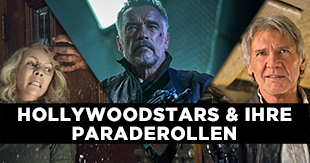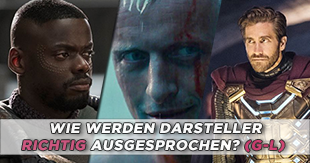AICN schreibt: [..] In 2007 Robert Zemeckis is releasing his next film, an adaptation of BEOWULF that was scripted by Roger Avary and Neil Gaiman. The cast includes Crispin Glover as the monstrous Grendel (the first time Glover has reteamed with Zemeckis since all that bad blood surrounding BACK TO THE FUTURE 2), Ray Winstone as Beowulf, Angelina Jolie as the demonic mother of Grendel, Anthony Hopkins as the King being tormented by Grendel. Also in the cast is Brendan Gleeson, Alison Lohman, John Malkovich and Robin Wright Penn. There has been some concerned discussion about this film online since it was announced. People are worried it will be watered down or kiddie friendly because of Zemeckis choosing to make this story using the process he calls Performance Capture, which he used recently on the kid's book turned holiday family film POLAR EXPRESS. I'd be lying if I said I was a little disappointed that he wasn't filming it live-action as I've always wanted to see this story done balls to the wall in flesh and blood on the big screen. When we walked into the unassuming Beowulf offices the first thing I saw was an L shaped set-up going along two walls with a flat panel big screen TV on each wall, connected to at least 10 computers manned by around 6 people. The rest of the office walls were covered with posters for BACK TO THE FUTURE and its sequels, and various other Zemeckis films. There was a sweet-ass BACK TO THE FUTURE pinball machine in the meeting room down the hall from this set-up. I didn't play it, but I really, really, really wanted to. I was introduced to Christopher Browne, the post production coordinator, who led Avary and myself to a back room where the "Beowulf Bible" was sitting on the conference table. It was bound in thick, brown weathered leather with the title BEOWULF imprinted on the cover and was about as thick as a big city phone book. Within this tome was the movie told in 8X10-ish sized color stills, concept art and computer tests. I was looking at Ray Winstone as Beowulf, one of the first pics, and was marveling at his costume and Viking beard. I was assuming it was a lighting study or costume design test, a model for the animators. Browne then told me that what I was looking at wasn't a still, but a computer generated image, a test shot of what the final product will look like. I looked closer and I didn't believe him. I'm not exaggerating when I say this still was photoreal. Browne told me about how Zemeckis took the criticisms of POLAR EXPRESS to heart, specifically the "dead eye syndrome." The animation work on POLAR EXPRESS was pretty phenomenal, but even the biggest fans of that movie can't deny there was this doll-like feeling to the characters, that there wasn't anything behind their eyes, making it really really creepy to watch these otherwise living beings with no spark of soul or humanity in their eyes. So for Beowulf they used this process called OEG (electro oculography) which maps the actor's eye movements, down to eye-lid flutters. They place three sensors on the skin around the actor's eyes that pick up electrical pulses given off by the eye muscles and surrounding nerves. They showed me a side-by-side comparison of Ray Winstone before this new technology gave him human eyes and after. The difference in realism is astonishing. The "after" shot looked photoreal and the before shot looked like a top of the line computer game character. The secret to realism with these CG creations is all in the eyes, commonly referred to as the windows to the soul. Weta Digital got that with Gollum and King Kong and Lucas with Yoda in Episode 3. [..]
Quelle:
AICN





